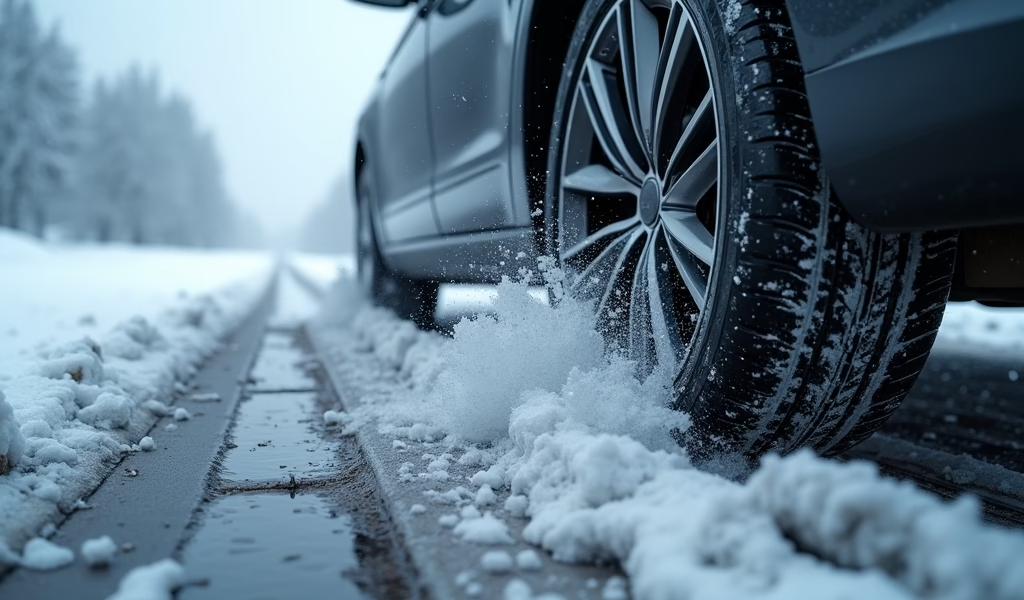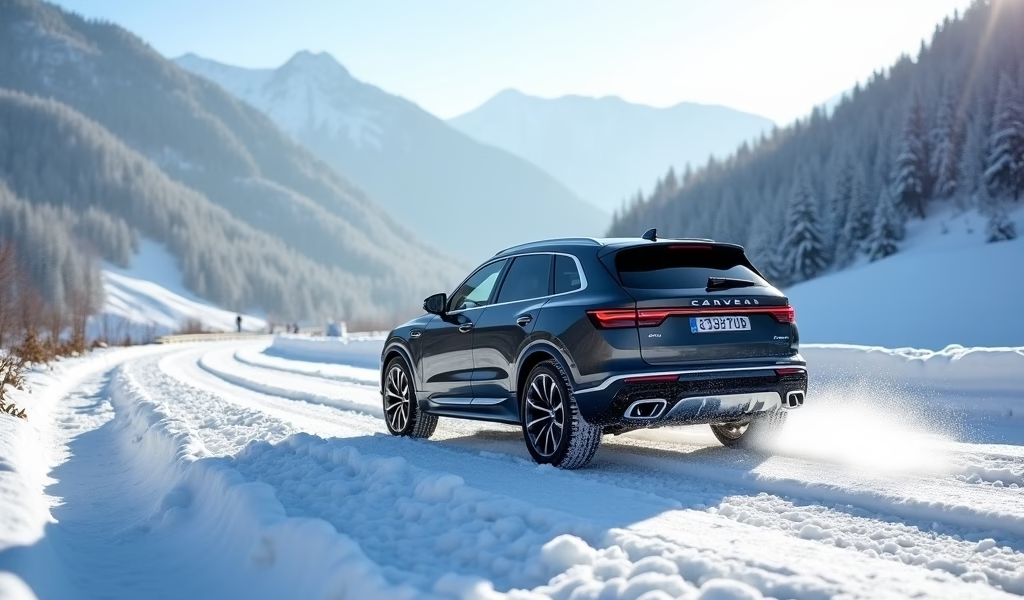Overview
This article reviews the seven best snow tires for winter driving, emphasizing how dedicated winter tires with special rubber compounds and tread patterns significantly outperform all-season tires in cold conditions by reducing stopping distances by up to 30% and preventing accidents. It provides detailed purchasing guidance including specific tire recommendations across different price points ($110-$230), installation timing (below 45°F), and maintenance tips, highlighting that winter tires are an essential safety investment rather than an optional accessory.
Table of Contents
- Why Snow Tires Matter: Beyond the All-Season Promise
- What to Look for in Snow Tires: The Technical Details
- Our Top 7 Snow Tire Recommendations
- Budget Considerations: The Cost of Winter Safety
- Installation and Maintenance Tips
- Conclusion: Preparing for Winter’s Worst
- Frequently Asked Questions
Winter transforms familiar roads into treacherous terrain. When temperatures drop and snow falls, your tires become your lifeline to the road. At Knows Your Car, I’ve seen countless drivers struggle with inadequate tires in winter, often with dangerous consequences. The right snow tires aren’t just an accessory—they’re essential for winter safety.
Many drivers assume their all-season tires will handle winter conditions, but dedicated winter tires can be the difference between a safe journey and ending up in a ditch. Not all winter tires perform equally, which is why I’ve created this guide to the seven most reliable options available today.
Why Snow Tires Matter: Beyond the All-Season Promise
All-season tires are like wearing sneakers year-round instead of switching to winter boots when it snows. They’re a compromise that becomes dangerous when temperatures plummet.
Best winter tires differ in two critical ways: specialized rubber compounds that stay flexible in freezing temperatures and aggressive tread patterns designed to bite into snow and slush. The science is clear—winter tires maintain flexibility below 45°F, while all-seasons harden and lose grip.
The data is compelling. Vehicles with proper winter tires experience 38% fewer winter-related accidents according to Transport Canada research. Even more impressive, snow tires reduce stopping distances by up to 30% compared to all-seasons on icy roads. That’s the difference between stopping safely and sliding into the car ahead of you.

What to Look for in Snow Tires: The Technical Details
Tread Design: Your Tire’s Winter Strategy
The perfect winter tire tread resembles a complex maze designed with purpose. Look for:
- Deep grooves that channel snow and slush away from the contact surface
- Zig-zag patterns (sipes) that create biting edges for traction
- Wide lateral channels that prevent slush buildup
- Micro-pumps that disperse water to prevent hydroplaning
Rubber Compound: The Cold-Weather Chemistry
Winter-specific rubber contains higher silica content and special polymers that stay flexible in freezing temperatures. This flexibility allows the tire to conform to road irregularities and maintain grip when regular tires would become rigid and slippery.
Next time you’re at a tire shop, press your thumb into a winter tire and then into an all-season. You’ll immediately feel the difference in softness—that’s the special compound at work.
Certification: The Mountain Snowflake Symbol
Never purchase winter tires without the mountain snowflake symbol (Alpine symbol) on the sidewall. This certification indicates the tire has passed specific performance tests in snow conditions. It’s your guarantee that the tire meets minimum winter performance requirements established by industry organizations.
Sizing Considerations: Sometimes Smaller Is Better
Winter often calls for slightly narrower tires than your standard set. Narrower tires cut through snow rather than floating on top, improving traction. Check your owner’s manual for winter tire sizing recommendations specific to your vehicle.
Our Top 7 Snow Tire Recommendations
1. Bridgestone Blizzak WS90
Key Features: The Blizzak WS90 uses Bridgestone’s MultiCell compound that removes the thin water layer forming on icy surfaces. Its aggressive directional tread includes 3D zigzag sipes that bite into deep snow.
Best For: Excels in all winter conditions but truly shines on ice and in deep snow. Ideal for regions with severe winters.
Price Range: $130-$200 per tire
What Drivers Say: Users consistently praise the Blizzak’s grip on ice. Many report feeling “glued to the road” even in the most challenging conditions. Some note they’re slightly noisier than competitors but worth it for the safety they provide.
2. Michelin X-Ice Snow
Key Features: Michelin’s FleX-Ice 2.0 compound maintains flexibility in extreme cold. The V-shaped tread design with 3D sipes maximizes snow traction while evacuating water to prevent slush buildup.
Best For: Balanced performance across all winter conditions with particularly impressive ice braking. Perfect for drivers facing mixed winter conditions including freezing rain.
Price Range: $140-$220 per tire
What Drivers Say: Drivers love the X-Ice Snow’s longer tread life compared to other winter options. Reviews consistently mention excellent handling on both dry and snow-covered roads, making these popular for fluctuating winter conditions.
3. Continental VikingContact 7
Key Features: Continental’s Nordic compound includes active grip particles that work like microscopic studs. The tread incorporates “grip teeth” between blocks that provide additional edges for snow traction.
Best For: Outstanding performance on packed snow and ice. Handles wet conditions exceptionally well for a winter tire.
Price Range: $135-$195 per tire
What Drivers Say: Users report excellent traction on ice with surprisingly low road noise. Many note the VikingContact provides a smoother ride than expected from aggressive winter tires, making it popular for daily drivers.
4. Nokian Hakkapeliitta R5
Key Features: Developed by Finnish tire experts, the Hakkapeliitta R5 features Arctic Sense Grip compound enriched with Nordic natural rubber. Its Double Block Grip design and Cryo Crystal particles act like built-in microscopic studs.
Best For: Engineered for the harshest winter conditions. Exceptional on ice and in extreme cold. The gold standard for severe northern winters.
Price Range: $150-$230 per tire
What Drivers Say: Consistently rated top-of-class for ice traction. Users in northern states and Canada frequently call these “the only winter tire worth buying.” The premium price is the most common criticism, though most consider it justified.
5. Goodyear WinterCommand Ultra
Key Features: Features Goodyear’s Winter Reactive Technology that adapts tread compound stiffness based on temperature. Its V-Tred Technology creates a center rib for stability while maintaining snow-clearing channels.
Best For: Balanced performer handling snow, ice, and dry roads confidently. Good choice for areas with variable winter conditions.
Price Range: $120-$180 per tire
What Drivers Say: Drivers praise the WinterCommand Ultra’s balanced performance and value. Many note improved handling on slushy roads compared to previous generation winter tires, with several mentioning excellent dry road handling.
6. Pirelli Ice Zero FR
Key Features: Pirelli’s directional tread pattern features 3D sipes and a specialized winter compound with functional polymers. Wide longitudinal grooves efficiently disperse water and slush.
Best For: Performs admirably in moderate to severe winter conditions. Particularly good in wet snow and slush common in areas with fluctuating temperatures.
Price Range: $130-$190 per tire
What Drivers Say: Users appreciate the Ice Zero’s quieter ride compared to other winter options. Many reviewers note excellent handling on partially cleared highways and improved fuel economy compared to other winter tires.
7. Yokohama iceGUARD G075
Key Features: Features Yokohama’s enduro tread compound with micro-bubbles that create a cushion on ice. Triple 3D sipes increase edge effect without compromising block rigidity.
Best For: Especially well-suited for SUVs and crossovers. Balances snow performance with reasonable dry handling, making it ideal for regions with intermittent snowfall.
Price Range: $110-$170 per tire
What Drivers Say: Frequently cited as an excellent value option that doesn’t compromise significantly on performance. SUV owners particularly praise the stability in snow, though some report slightly less ice performance than premium competitors.

Budget Considerations: The Cost of Winter Safety
Winter tires represent a significant investment, but one that pays dividends in safety. While prices typically range from $110-$230 per tire, I’ve observed three distinct performance tiers:
Economy Tier ($110-$140): These provide basic winter performance improvements over all-seasons but may compromise on ice braking or tread life.
Mid-Range ($140-$180): The sweet spot for most drivers, offering excellent winter performance with reasonable longevity.
Premium Tier ($180-$230): These provide the ultimate in winter traction, often with longer tread life and better performance in extreme conditions.
Remember, winter tires typically last 3-4 seasons, making their annual cost more reasonable than it first appears. When you consider potential accident costs, insurance deductibles, and personal safety, premium winter tires become one of the most cost-effective vehicle safety investments you can make.
As one of my customers likes to say, “Winter tires aren’t expensive—accidents are expensive.”
Installation and Maintenance Tips
Timing Is Everything
Install winter tires when temperatures consistently fall below 45°F (7°C), typically in late October or November in northern regions. Remove them when spring temperatures remain above this threshold to prevent premature wear.
I always tell my customers: “Don’t wait for the first snowfall—that’s when everyone panics and tire shops get swamped.”
Proper Storage Matters
Store winter tires in a cool, dry location away from direct sunlight and ozone sources (like electric motors). Consider tire bags or stack them horizontally to maintain sidewall integrity. Proper storage can extend tire life by a full season.
Rotation Schedules
Rotate winter tires every 5,000 miles to ensure even wear patterns. Front-wheel-drive vehicles typically wear front tires faster, so regular rotation becomes even more critical.
I’ve seen countless sets of winter tires ruined by neglecting rotation. Don’t make that expensive mistake.
Winter Pressure Guidelines
Cold temperatures decrease tire pressure—approximately 1 PSI for every 10°F drop in temperature. Check pressure monthly during winter, preferably when tires are cold. Maintaining proper inflation is critical for optimal traction and handling.
I keep a quality pressure gauge in my glovebox and check my tires on the first Saturday of each winter month. Simple habits create safer journeys.
Conclusion: Preparing for Winter’s Worst
The best snow tires combine advanced materials science with sophisticated tread designs to deliver what matters most: control when conditions are at their worst. While the Bridgestone Blizzak WS90 and Michelin X-Ice Snow represent the gold standard for most drivers, any of our seven recommendations will dramatically improve your winter driving safety compared to all-season alternatives.
At Knows Your Car, I’ve witnessed the dramatic difference proper winter tires make in emergency situations. No electronic stability control system or all-wheel-drive setup can compensate for inadequate traction at the contact patch. Winter tires remain your most important safety investment for cold-weather driving.
Don’t wait until the first snowfall to consider your winter tire strategy. Supplies often dwindle as winter approaches, and installation appointments fill quickly. Being proactive about winter tire installation isn’t just convenient—it might be the decision that keeps your vehicle on the road and out of the ditch during this year’s most challenging driving conditions.
Remember: When temperatures drop, so does the effectiveness of standard tires. Choose winter-specific rubber, and you’ll discover a new level of confidence on snow-covered roads. Your safety and the safety of those you share the road with are worth the investment.
Frequently Asked Questions
When should I put on snow tires?
Install snow tires when temperatures consistently drop below 45°F (7°C), typically in late October or November. Don’t wait for the first snowfall when everyone else rushes to tire shops.
Can I use winter tires year-round?
No, winter tires wear rapidly in warm weather and deliver poor handling on dry, warm pavement. Remove them when spring temperatures consistently stay above 45°F.
Do I need winter tires if I have all-wheel drive?
Yes, all-wheel drive helps with acceleration but doesn’t improve braking or cornering in winter conditions. Winter tires improve all aspects of winter driving regardless of your drive system.
How long do snow tires typically last?
Quality snow tires typically last 3-4 winter seasons with proper care and storage. Their lifespan depends on driving conditions, maintenance, and how they’re stored during off-seasons.
Do I need to buy new rims for my winter tires?
While not required, dedicated wheels for winter tires make seasonal changeovers easier and protect your regular wheels from winter damage. Steel wheels are a cost-effective option for winter use.

